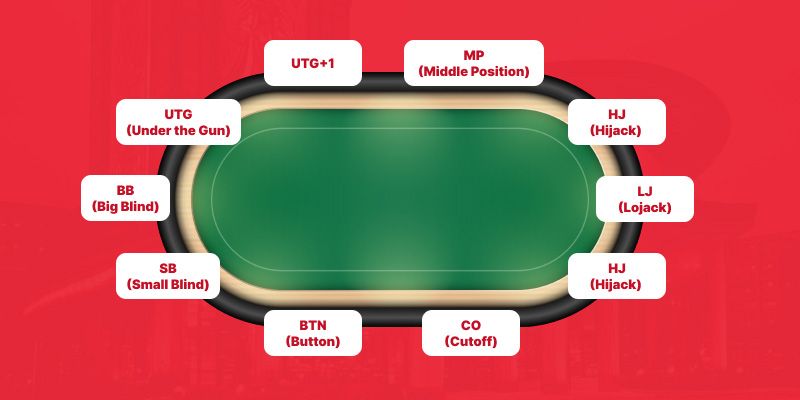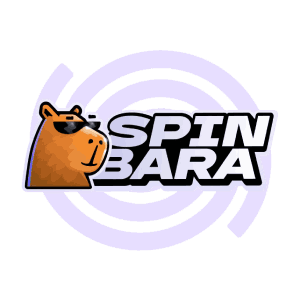
Strategic Poker Table Positions: A Beginner’s Guide
If you're looking to play poker strategically, positional understanding is essential. Poker positions determine the order in which players act and influence which hands are profitable or safe to play. In this guide, we've provided insights into all poker positions and advice on modifying your play based on your seat at the table.
What Are Poker Table Positions?
Positions in poker refer to a player's seat relative to the dealer button. In addition to blinds, generally, there are three position groups. The running order starts from small blind followed by big blind. Then, in a clockwise direction, the next ones are the early Under the Gun (UTG, UTG+1, etc.) positions. Meanwhile, the most advantageous are the middle and late poker seat positions (MP, LJ, HJ, CO).
Early, Middle, and Late Positions
It's crucial to leverage your strategy according to your seat. Let's look at the essential positions at a 9-handed poker (full-ring) or 6-max table, which are mostly prevalent in Texas Hold'em.
- Early Positions (EP): Under The Gun (UTG) positions are the first three to act after the small and big blind.
- Middle Positions (MP): Lojack and hijack seats are considered middle positions.
- Late Positions (LP): The cutoff and button, the last two to act, fall into the late poker table position category.
Early positions are the first ones, and they offer the least information about other players' cards. The recommended strategy for these is to avoid risky and speculative play. Middle seats can take on more hand variety, yet the playing style should remain cautious. Late positions are the most flexible, enabling aggressive moves like stealing blinds and pressuring other players.
A Simple Poker Positions Chart
We've compiled a chart with thorough explanations to help you become acquainted with poker position names and their significance at the table.

| Position | Description | Category |
|---|---|---|
| SB (Small Blind) | Posts small blind and first to act post-flop | Blind |
| BB (Big Blind) | Posts big blind and second to act post-flop | Blind |
| UTG (Under the Gun) | First to act pre-flop, requiring the tightest opening range | Early |
| UTG+1 | Second to act pre-flop | Early |
| MP (Middle Position) | Third to act pre-flop and can implement a slightly better range | Middle |
| LJ (Lojack) | A middle position starts offering more flexibility | Middle |
| HJ (Hijack) | Late table position in poker allows to start steals and semi-bluff opens | Late |
| CO (Cutoff) | An excellent stealing position | Late |
| BTN (Button) | Best position allowing the maximum option range | Late |
Why Position Matters in Poker
Positions are key to adjusting and mastering strategic play. There are numerous advantages of playing poker based on your seating at the table:
-
Acting later provides more information
Being the last to act lets you observe opponents, helping you read their hand strength more accurately.
-
Improved pot control
With an advantageous position, you have more gameplay options. Added flexibility on when to bet or check allows you to manage your pot size more effectively.
-
More chances for bluffing
If you notice other players’ hesitation, you can lean into it with timely bluffs and potentially attain more winning hands.
-
Allows to determine odds more accurately
With poker positions explained, you'll get a clearer perspective of other players' actions. Therefore, your estimates of whether it's profitable to continue playing are more precise.
How to Use Your Seat to Play Better
Unless you're playing video poker, where you compete against the computer, it's a good practice to prepare a course of action depending on your position at a poker table. When participating in a game with other players, you can use these helpful tips to improve your gameplay.
Early position
- Stick to playing with valuable pairs like KK and AA or high-suited connectors like AK.
- Fold weak and marginal hands, for example, pocket pairs like 66 or 72, the weakest hand in Texas Hold'em.
Middle position
- If players in earlier positions have folded, you can open wider hands with suited connectors (98 or T9).
- Watch out for late player moves. If they play aggressively, consider folding.
Late position
- Use your position and raise with broader hands like suited connectors, especially if there are many folds at the table.
- Make small raises to steal the blinds.
Blinds
- Only call raises with hands that have potential for successful playability, like suited connectors or high-value pairs.
- Make strategic 3-bets with good hands and occasional bluffs. It will allow you to gain a slight upper hand despite the positional weakness.
4
Next Steps for Beginners
Now that you've familiarized yourself with the basic framework of what are the positions in poker and how they work, you can proceed to implement the advice disclosed in this CasinoCanada guide in practice. To sum up, here's how you should approach positional play:
-
Save the poker position chart: To memorize the position sequence, take a screenshot, make notes, or even print the chart featured in this article.
-
Monitor your seating: Always note your exact position in the game to adjust your strategy promptly.
-
Adapt your playing style: Remember the recommended alterations for playing your hands depending on your seat. Start conservatively in early positions and save aggressive play for later.
-
Analyze the game: Always review your gaming session. This will allow you to determine whether you took the correct course of action.
Putting It All Together
Your poker seating position significantly shapes decision-making during the game. As the seat shifts during the game, you must preplan tactics for each position. By following the roadmap laid out in this article, you can come up with specific steps to take depending on your placement at the table. Such focus is more effective than playing hands randomly, as positional awareness provides more information to act on.














